How exciting is it when going away on a holiday or a long weekend, you do not just go to see a place, but to see the hotel you will be staying at? Innovation and technology intertwined with modern design thinking and sustainability result in brilliant and breathtaking structures.
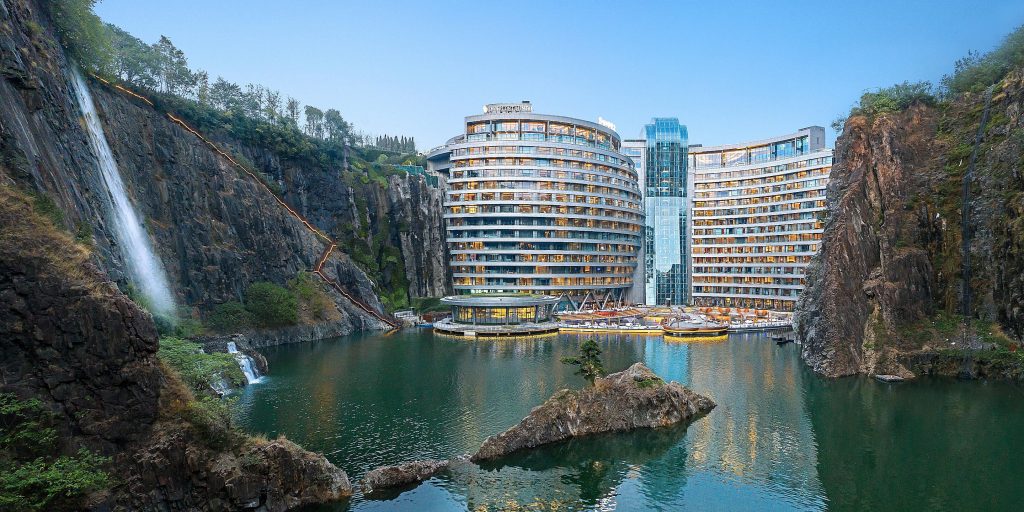
Located just 27km from the Shanghai National Exhibition and Convention Center, InterContinental Shanghai Wonderland welcomes you with a low-profile, two-story building with a grassy roof. This makes you wonder, when the bold work of architectural design you were promised is going to amaze you. The secret is that you have to arrive by helicopter to immediately get the whole grand perspective of this stunning property which has been masterfully built directly into the cliffs of an abandoned 90m deep water filled quarry.
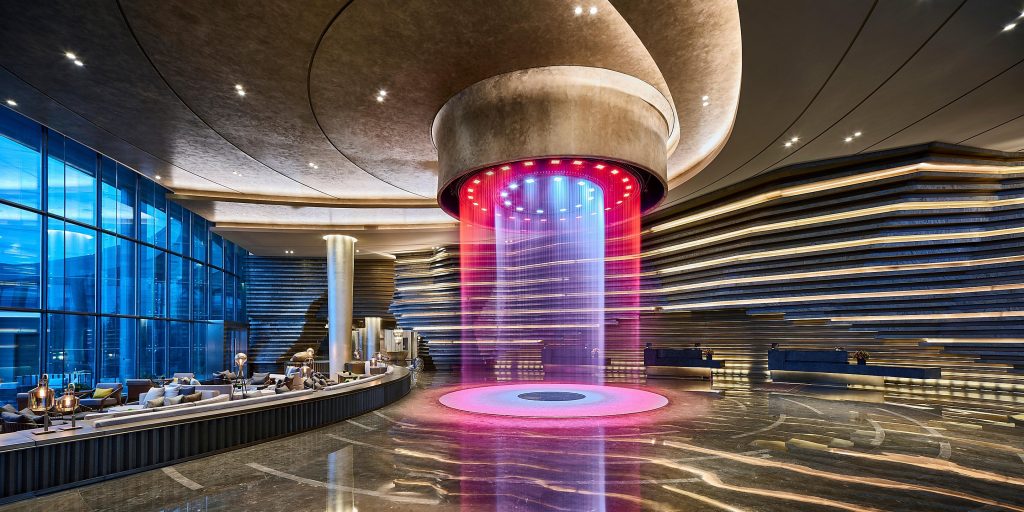
She Shan Lounge
With this project, JADE+QA architects aimed at showing how a difficult and unappealing site can be made useful and filled with a new life. With no restrictions as to the design of the future resort, they were inspired by the surrounding cliffs, the lake, the green hills, and the quarry itself.
These natural elements were blended into the basis of the resort’s design: the cliff grew into the body of the hotel, where the guest rooms are located, the waterfall turned into a faux doppelganger down the center of the building to house the elevators, and the green roof of the structure represents the hills.
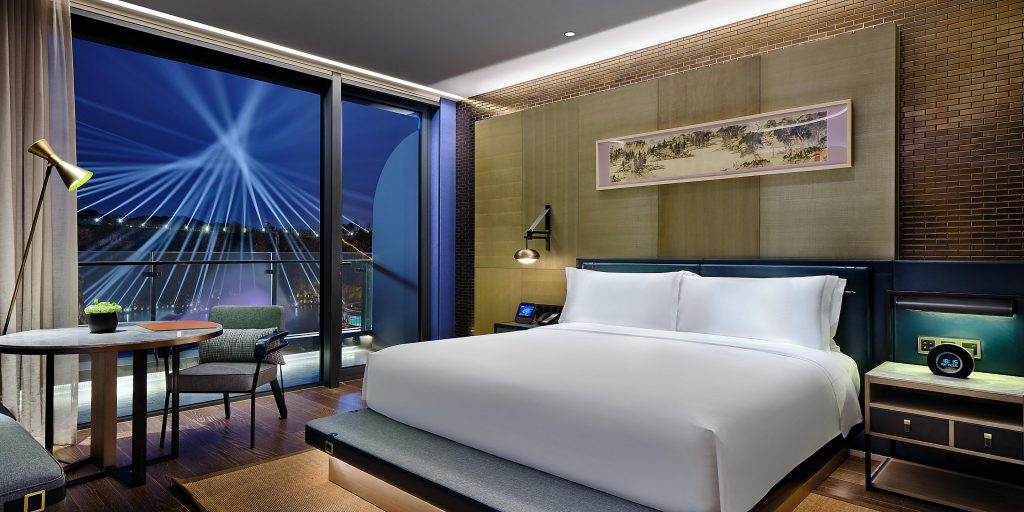
A room at the Wonderland
Sustainability played an important role in the whole design process: for example, the hotel is located within the site in such a way as to provide most sunlight for guest rooms and for the hotel’s solar panels. The natural air shaft left between the building and the cliff wall serves for insulation in wintertime and cools in summer.
This unique hotel took more than 12 years to construct because of the challenges Mother Nature had in stock. The team of 5,000 architects, engineers, designers, and workers ended up patenting 41 different engineering methods during the build.
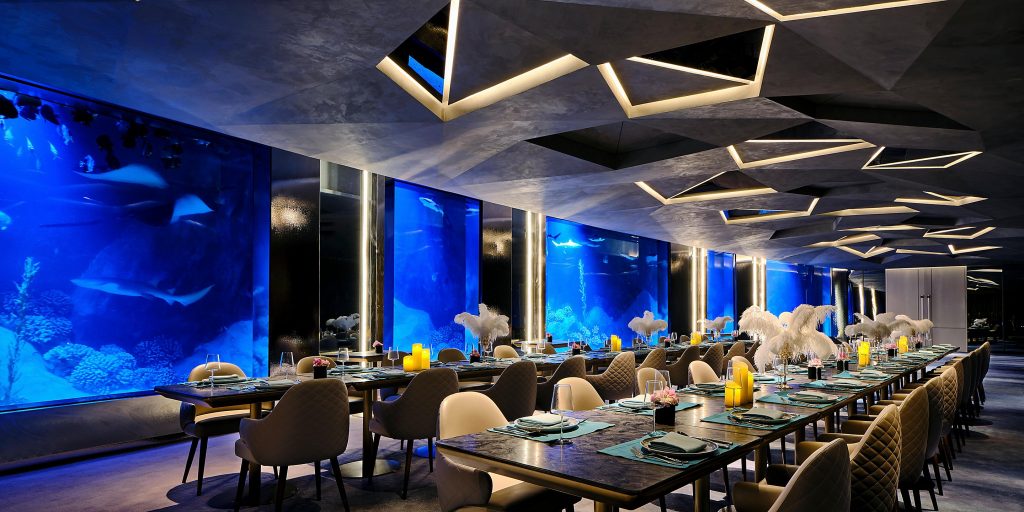
Mr Fisher Restaurant
The hotel has opened its doors to the guests and is very popular. It boasts a glass waterfall atrium that pours over the façade, 14 floors of above the water rooms as well as underwater ones, and an extensive list of facilities.
Another example of sustainable construction, and utterly different one from the grandeur of the InterContinental in Shanghai is a series of treehouses that may become an extension to a hotel in the Dolomites of Northern Italy, developed by Peter Pichler Architecture.
Pointed roofs and darkened wood are set against the densely forested slopes – these clustered Tree Houses rise like genuine features of the landscape to offer an opportunity to connect with nature.
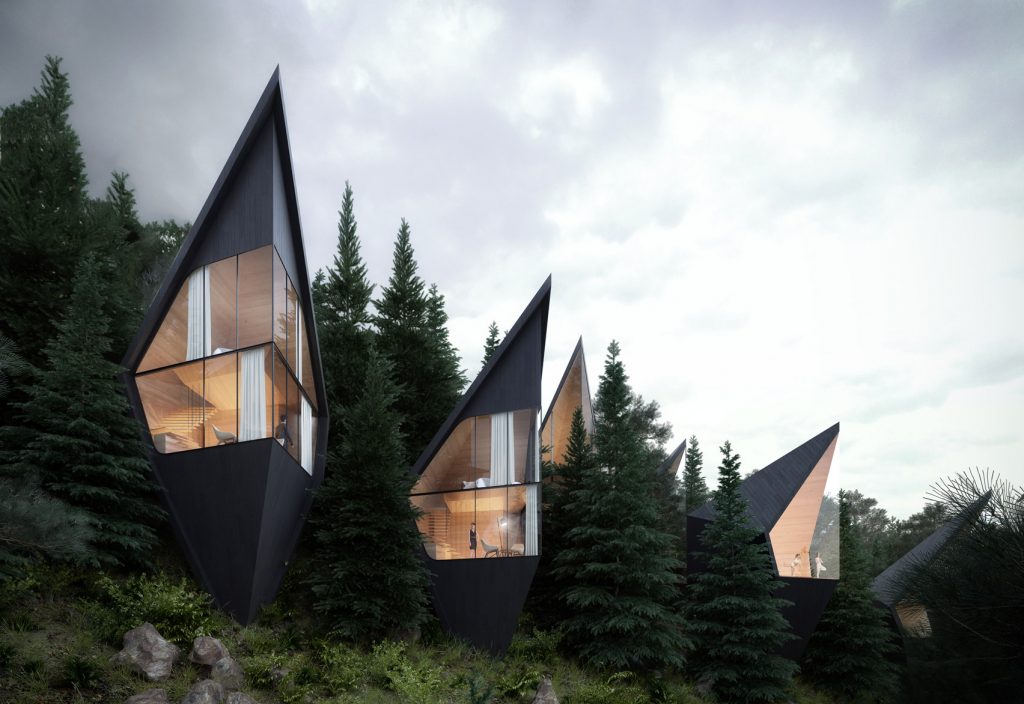
The award winning project by Peter Pichler Architecture
Resting on a small concrete foundation with additional structural support provided by the glass walls, when finished the treehouses will range between 35 and 45 square meters in area, each having the same steeply pointed roof and a base, intended to echo the forms of fir and larch trees abundant in the area. Inside, the architects plan to line each house with untreated fir wood to create a warm interior that contrasts the facades.
Two levels will ensure amazing views through the floor-to-ceiling windows. The lower level will contain a reading and lounge area, as well as a bathroom and an open-tread stair leading to the sleeping area upstairs.
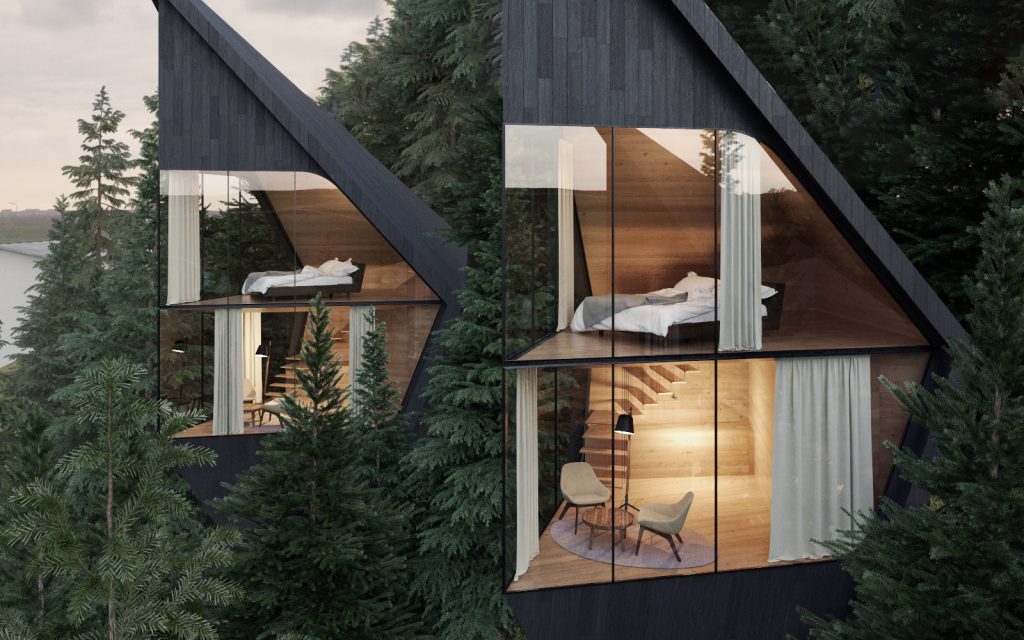
Tree houses by Peter Pichler Architecture
The structures will be built almost entirely from locally sourced larch and fir wood. Rainwater will be collected and reused with the help of special tanks, while geothermal heat pumps will provide for heating in the winter months.
The project is intended to serve as a ‘slow down’ form of tourism, where sustainable architecture is well integrated into the nature enhancing the relationship between the nature and the human being.